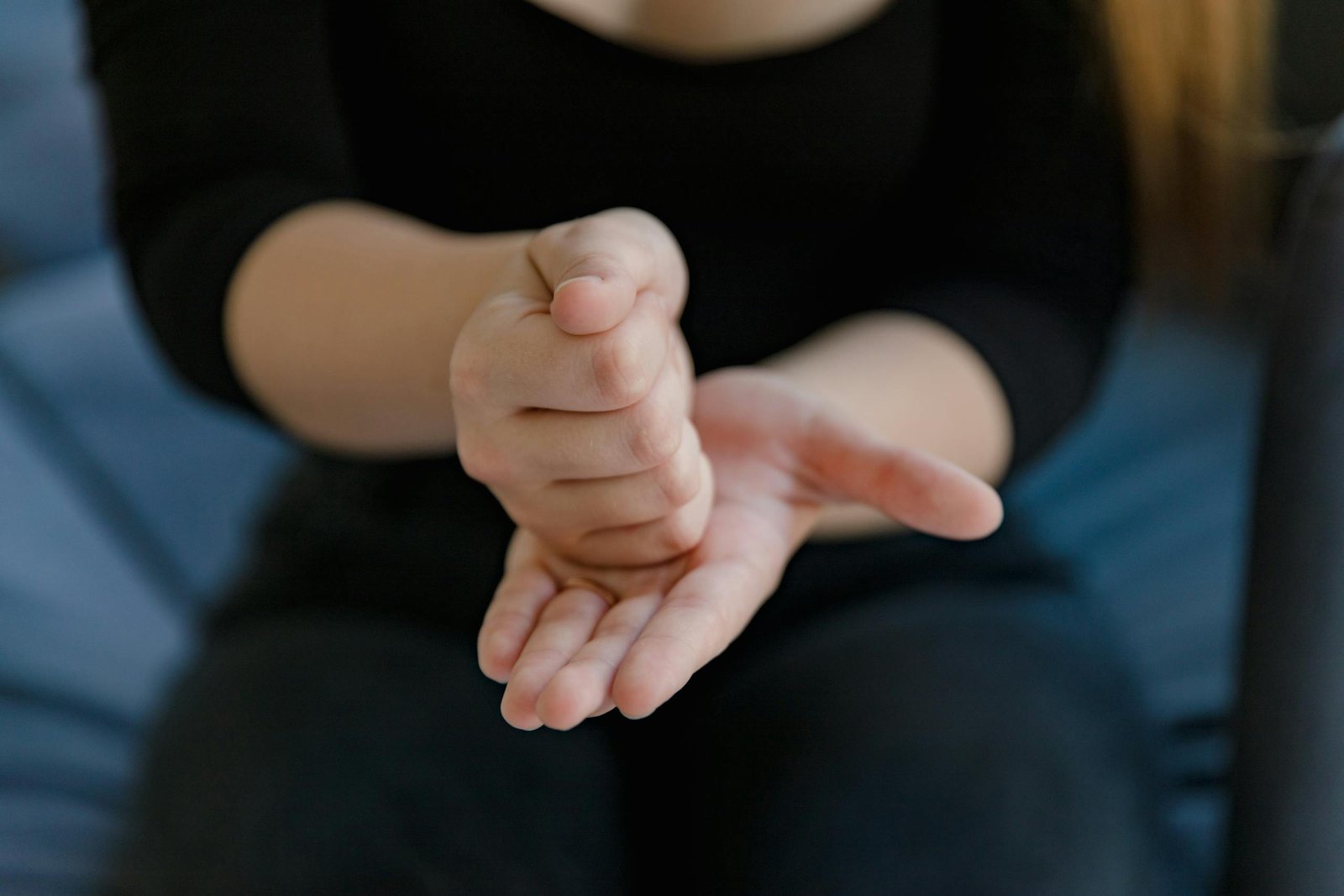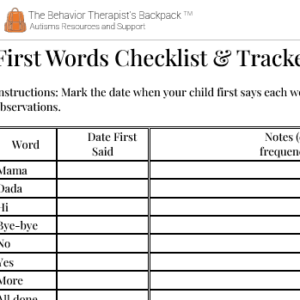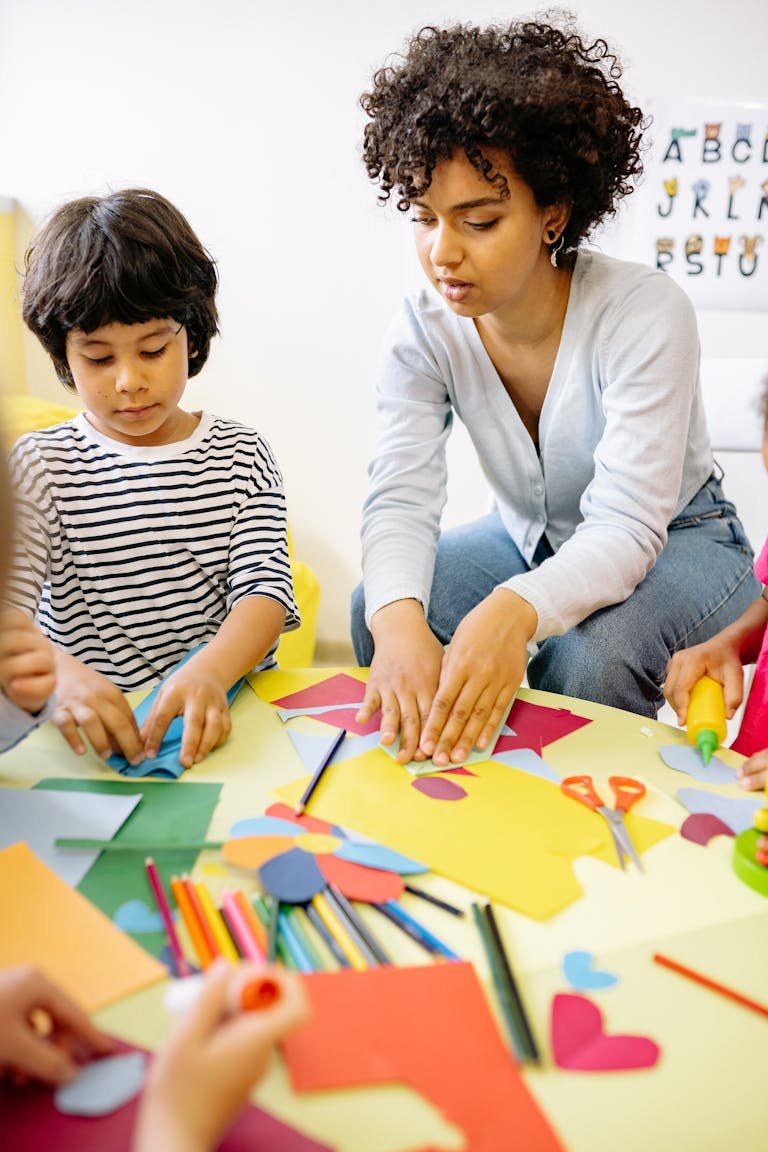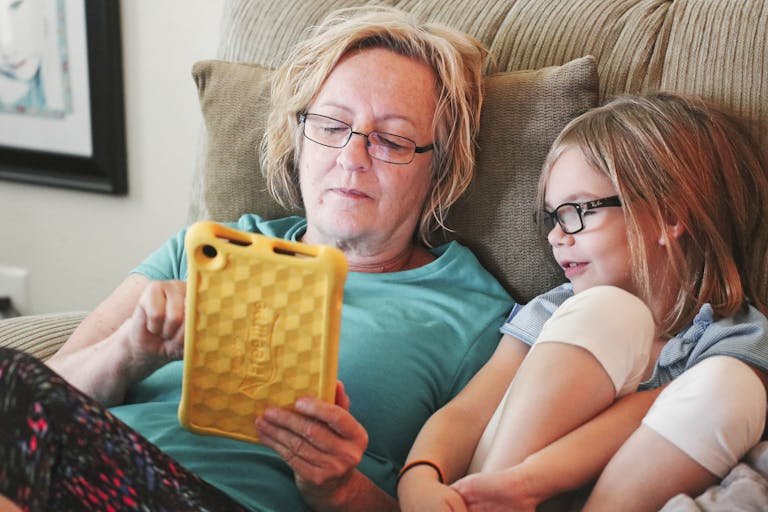
Communication? It’s everything. It’s how we connect, how we tell someone we need a hug, how we ask for that favorite snack, how we just… exist with other people. It’s the bedrock of relationships and independence.
But for so many incredible folks, especially our neurodiverse kids and clients, that spoken word connection can be… tough. Sometimes speech is delayed, sometimes it’s unclear, and sometimes, those words just aren’t accessible in the moment. And honestly? That can feel incredibly isolating and frustrating for everyone involved.
This is exactly why diving into Augmentative and Alternative Communication (AAC) is so powerful. It’s not about replacing speech; it’s about adding tools to the toolbox. And let me tell you, one of the most beautiful and effective tools out there is American Sign Language (ASL).
-
First Words Tracker
$0.00
ASL: Your Secret Communication Weapon
Think of basic sign language, especially those first essential signs, as building a crucial bridge. For some, it might be that temporary bridge while spoken language develops – a fantastic way to reduce frustration and get communication flowing now. For others, ASL might become their primary, rich, and expressive language. Either way, it’s a legitimate, powerful way to communicate, and it absolutely deserves a spot in our strategy toolkit.
Forget needing to be an expert overnight. The goal here is functional communication, those key words that unlock connection and reduce stress. And trust me, it’s way more achievable than you might think.
It Takes a Village (Signing Together!)
Here’s the absolute truth: bringing basic sign language into someone’s life works best when everyone’s on board. Parents, siblings, teachers, therapists – the whole crew! When everyone uses and understands a few core signs, you create an environment where communication attempts are understood and reinforced consistently. It makes learning faster and more meaningful. It’s about creating a truly inclusive space where this new language is celebrated and used naturally throughout the day.
Think about it: if only one person understands the signs, the opportunity for communication is limited. But if everyone signs “more” at snack time or “all done” after an activity, the learner sees the sign used in context repeatedly and has multiple people to communicate with. It’s building a true communication village!
A Story That Still Gives Me Goosebumps
Let me share something personal. I worked with a client who was really struggling. Communication was minimal, and they engaged in significant self-injurious behavior (SIB). It was heartbreaking to see, and we strongly suspected a major function of the behavior was rooted in not being able to communicate needs and frustrations.
We started super simple, focusing on just a couple of highly preferred items and the sign for “more.” We modeled it constantly, paired the sign with the spoken word, and whenever they made any movement that even vaguely resembled the sign, we celebrated and provided the “more” of whatever they wanted.
Slowly, tentatively, they started signing. First, it was approximations, then clearer signs. And as their ability to sign for “more” and eventually other requests grew, something incredible happened: the SIB started to decrease. It wasn’t magic; it was the power of communication. By giving them a way to effectively ask for what they needed – to control their environment in a functional way – we reduced the need for the challenging behavior. It was a powerful, real-life example of how teaching functional communication, just like we focus on in ABA, can truly change lives.
Ready for a Little Experiment?
Okay, your turn! Want to see the potential power of a single sign? Try this simple experiment with your child or client (choose someone who has some communication challenges and a favorite, easily controllable item like a specific snack or a preferred toy they access frequently).
- Pick ONE favorite item. Seriously, just one. Make sure it’s something they really love and want access to often.
- Learn the ASL sign for that item. A quick search online for “[item name] ASL sign” will do the trick.
- For the next few days, every single time you give them that item, say the word and clearly make the sign. Do this consistently before they get the item.
- Keep an eye out. Watch if they start to look at your hands, or even make small movements with their own hands when they want the item.
- When they show any indication (a look, a small hand movement, anything that seems like an attempt) when they want the item, interpret it as the sign, say the word, and immediately give them the item with huge praise! “You want [item name]! Great signing!”
See what happens. Does their looking at your hands increase? Do they start making any attempts? It’s a small step, but it can be incredibly eye-opening and show you the potential for more!
Let’s Start with the Basics
If you’re wondering where to begin after your experiment, here are some go-to first signs that are typically highly motivating and functional:
- More: (This one is a classic for a reason!)
- All Done: Great for transitions and expressing completion.
- Eat: So fundamental!
- Drink: Another essential need.
- Help: Empowers them to ask for assistance instead of getting frustrated.
- Open: Think containers, doors, etc.
- Go: For wanting to leave or go somewhere.
- Stop: A critical safety and control sign.
Start with just a couple that are most relevant to their daily life. Model them often, and celebrate every single attempt!
You’ve Got This!
Bringing basic sign language into your world is a powerful step. It’s about opening up new avenues for connection, reducing frustration, and empowering individuals to have a voice – or rather, hands! – in their world. It’s an incredibly rewarding process, and you are absolutely capable of making it happen.
Keep it fun, keep it consistent, and keep celebrating those communication breakthroughs. The journey of a thousand signs begins with a single… well, sign!
Need a little help finding those first signs? Check out these resources:
100 first signs: American Sign Language (ASL) – Lifeprint









